Mold on Popcorn Ceiling
If your ceiling was installed between 1930 and 1990, it may be a popcorn ceiling. However, popcorn ceilings and stucco ceilings (same idea; different application process) are making a come back.
Popcorn ceilings are created by applying a mixture using a spray gun or even a sponge or roller. The mixture contains elements such as paper and Styrofoam. Before being banned in Canada in 2018, asbestos was also frequently added to the mixture.
Worried About Mold on Your Popcorn Ceiling? Get a Free Inspection!
Popcorn ceilings can trap dust and moisture, making them a breeding ground for mold. Mold can be harmful to your health and difficult to remove. Don’t let it go unchecked! Contact Mold Busters for a free virtual mold inspection. Our experts are ready to provide you with a comprehensive assessment and a plan to tackle any mold issue, ensuring your home is safe and healthy. Act now to protect your space!
While popcorn ceilings hide underlying imperfections, the textured surface of a popcorn ceiling also attracts mold, a type of fungus. All types of mold are hazardous to your health, although not all types are toxic.
Mold is everywhere in the air. You’ve probably heard the term black mold, the most common type of mold. It lives on oxygen, moisture, and organic material, which can be carried by dust.
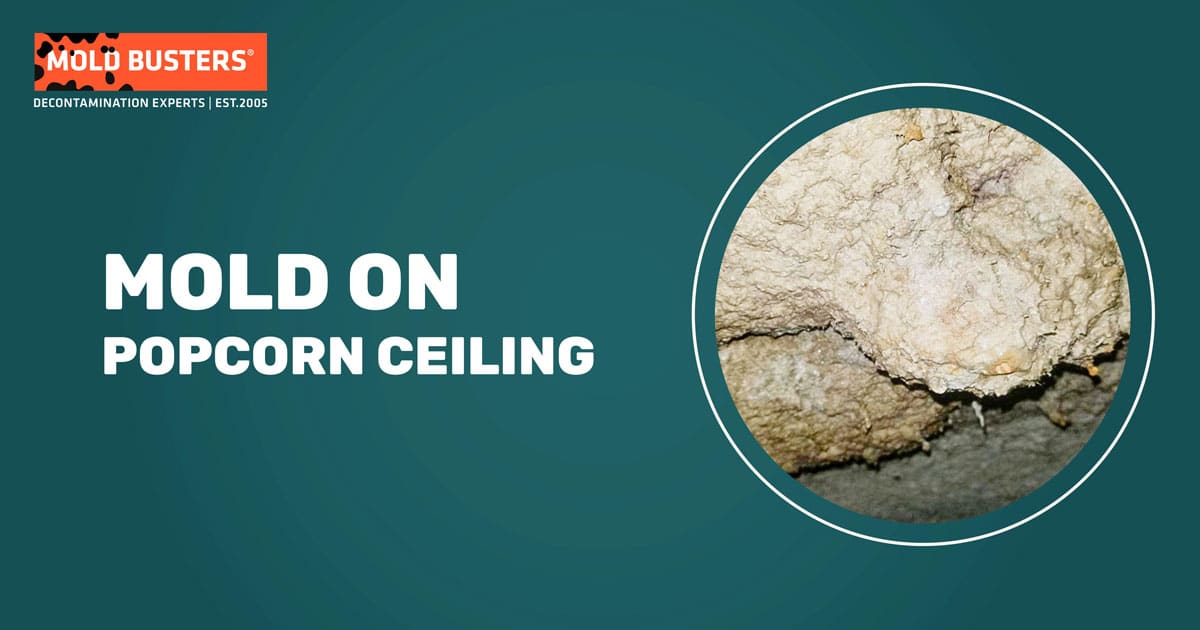
Most types of mold start to grow in 24 to 48 hours. However, for black mold to grow, it needs wet conditions for 8 to 12 days. Those conditions may be created in places you can’t see, like the space between an upstairs bathroom and the ceiling of the living room below it.
What’s in Your Ceiling?
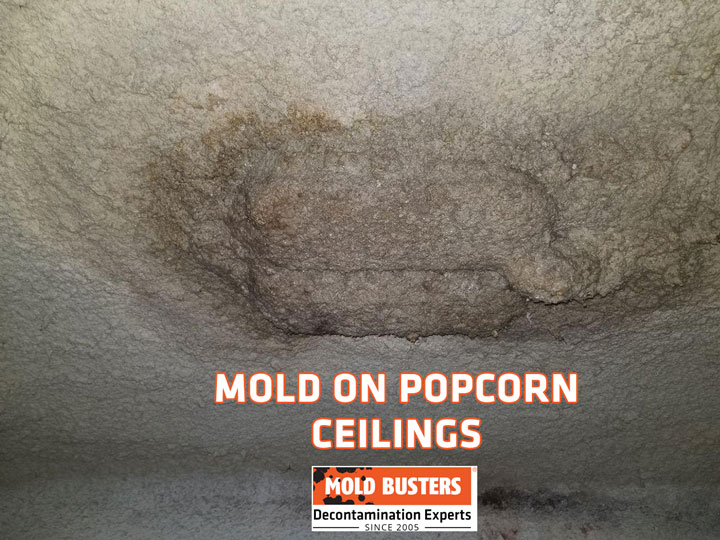
That’s right: What’s in your ceiling? The texture of a popcorn ceiling holds dust and humidity, making it the perfect home for a mold colony. Where do the mold spores come from?
- Unventilated air traps moisture in a room, a condition made worse by today’s better insulated homes
- Poorly maintained air conditioners harbour mold, which gets released every time you turn on your unit
- Your ventilation system
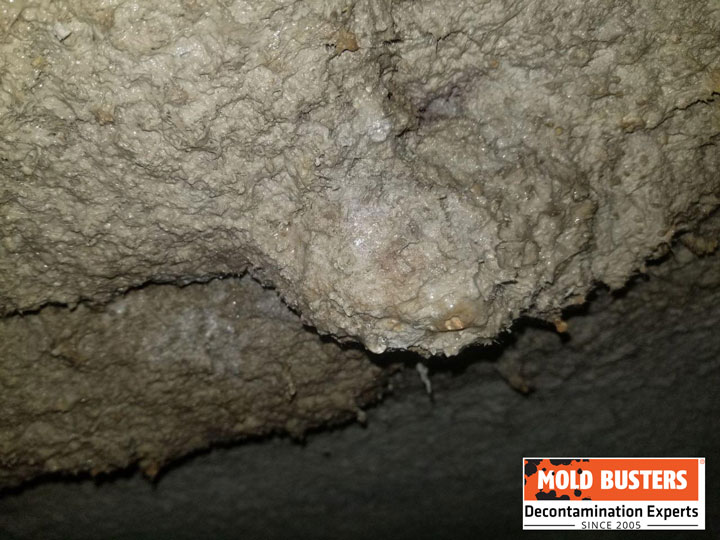
Air can transport mold spores to your textured popcorn ceiling. There they can lay until the right conditions materialize. Just add moisture from a leaky tub or kitchen sink! Your popcorn ceiling below—say, in your basement rec room—will make a perfect place for mold to grow.
Mold is complicated. Could it just be mildew? Does it also contain asbestos? To be certain, you’ll have to take a mold test. For that, hire an expert to do the job right. If you’re in the Montreal or Ottawa area, our teams are ready to assist you with comprehensive mold inspection and removal services.

Did you know?
87% of homes we tested have mold?! Find out more exciting mold stats and facts inside our mold statistics page.
How Can I Prevent Mold from Growing in My Popcorn Ceiling?
- Mold loves moisture. The number one tool in fighting mold is good ventilation. After you take that shower, turn on the bathroom fan. While you’re cooking your mother’s recipe for spaghetti sauce (the one that needs to simmer all day), turn on the fan over the stove.
- Open the windows to keep air circulating. Turn off the air conditioner; turn on the dehumidifier. You need to prevent any condition that causes condensation of moisture, which mold loves.
- Check for leaks around your plumbing. Make sure that water from the outside doesn’t make it inside. Prevent wetness from collecting anywhere.
- Mold feeds on dust. So, vacuum regularly. Get your home’s ducts cleaned regularly by a professional with the right tools to do the job.
- Have your HVAC system professionally cleaned. Regular maintenance not only helps keep mold away, but it also contributes to other factors of indoor air quality.
Why Remove Mold from Popcorn Celings?
Mold is a health hazard. Black mold is particularly dangerous, causing symptoms from headaches to lack of energy and even damage to vital organs.
In older forms of popcorn ceilings, asbestos may also be present. When disturbed, asbestos can release microscopic fibers that can enter your respiratory system and cause irritation. In the past, exposure to asbestos has even led to death from lung disease.
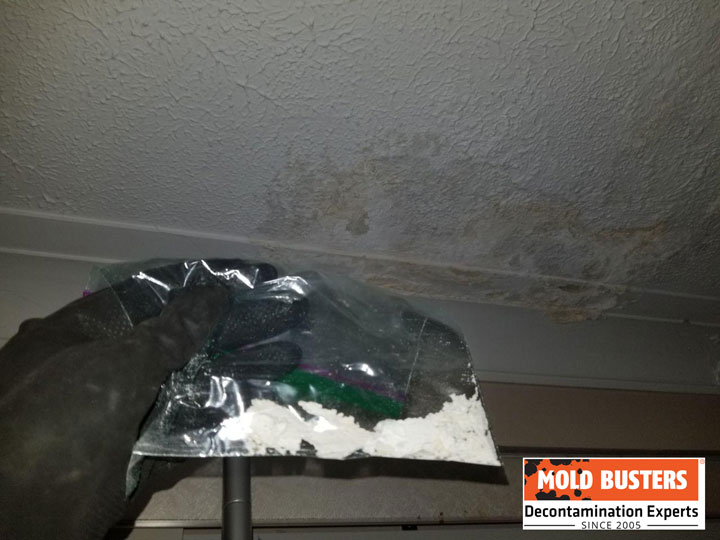
Mold is something that you don’t want in your indoor living space. Mold can quickly create health issues. Just as you go to a doctor when you feel sick, you need to go to a mold remediation and removal specialist to treat the problem.
How Can I Get Rid of Mold from My Popcorn Ceiling?
Can’t I just scrub it off? No. You’re dealing with a stubborn living micro-organism, not an ordinary stain.
Besides, scrubbing a popcorn ceiling would just remove the “popcorn” and leave a hard-to-repair bare spot. In any case, you’ll never be able to scrub off all the mold, leaving enough spores to colonize new growth. Furthermore, if your popcorn ceiling contains asbestos, you could also be releasing hazardous fibres into your indoor space.
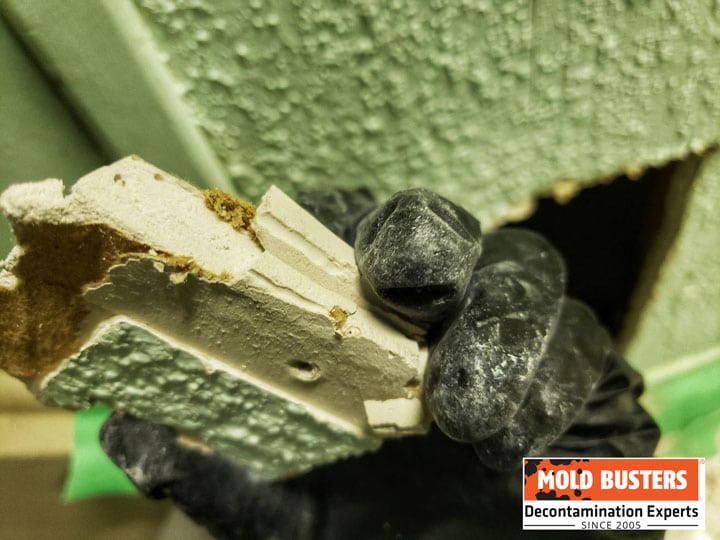
DIY mold removal products do exist on the market. You can even use bleach or vinegar. But because they’re liquids, you’ll need to spray or rub them on. These solutions will soak into the textured surface of a popcorn ceiling, dislodging it.
Painting will hide the mold but it will NOT kill it. Special anti-mold paint exist for this purpose, but they are more effective when used as preventative measures against mold, rather than mold cleaners.
Sealing mold into your ceiling won’t help get rid of your mold problem either. Again, you can buy a mold sealant, but using it is a complicated process. Sealants should be used only as a last-ditch effort.
So it’s time to face the truth: You need to remove the mold.
What’s a Homeowner or Landlord to Do?
Call the professionals. When it comes to mold, even the most skilled and experienced do-it-yourselfer faces daunting challenges. If you’re unable to have an in-person inspection, we also offer a free virtual mold inspection service to help identify potential mold issues.
First, you need an assessment. You can buy a home kit to test a troubling spot but be careful when you use it. Disturbing the surface of your popcorn ceiling can release toxic mold spores (and even asbestos).
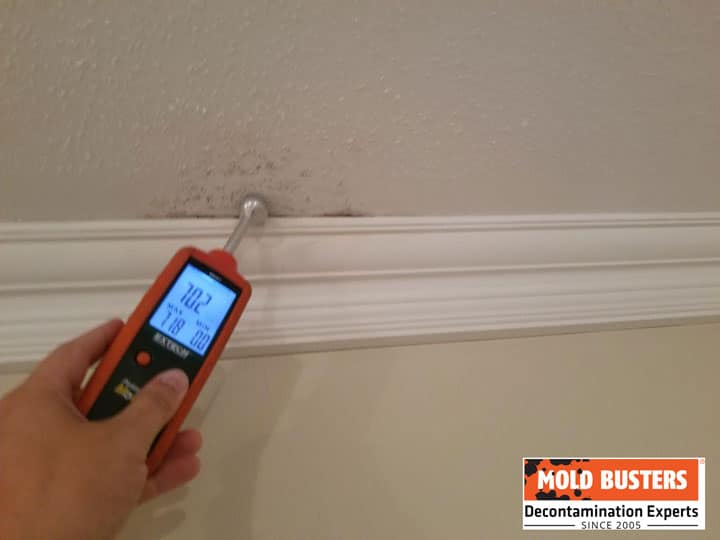
Having a professional take a sample is best. An expert can remove the sample safely and also inspect the area for possible sources of mold. A professional will also have access to independent testing labs. Results are available in a day or two.
Second, you need a mold inspection. A professional has the tools to measure all the atmospheric conditions particular to your home environment. A mold remediation and removal expert can then tell you how to tackle the problem.
Third, you need the mold removed–professionally, thoroughly, and safely. This is not a job for amateurs trying to save a few dollars. Treating a mold contamination is a job for professionals who have the expertise and tools to do the job that you really can’t do yourself.

Get Special Gift: Industry-Standard Mold Removal Guidelines
Download the industry-standard guidelines that Mold Busters use in their own mold removal services, including news, tips and special offers:
"*" indicates required fields
Published: October 12, 2020 Updated: June 13, 2024

Written by:
John Ward
Account Executive
Mold Busters
Fact checked by:
Michael Golubev
CEO
Mold Busters
